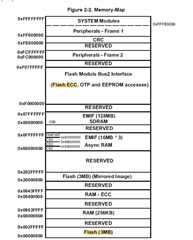Other Parts Discussed in Thread: NOWECC, UNIFLASH, HALCOGEN
Tool/software:
Hello,
I am currently trying to integrate ECC into my code but i had some question. I now that there is two type of execution first (XIP) where the code is directly executed from the Flash and the second where the code is copied to the RAM and executed from there but i wasn't able to found wich type the TMS570ls3134 is using.
Also for the ECC when applied to the RAM I understood that when data is written to the RAM, ECC bits are calculated and put in the corresponding address and then when the data is read from the RAM a check is done using the caclulated ECC bits, in the case of an error it is corrected and in the case of two an interrupt is generated. But i didn't understand how it is working for the Flash i know that i have to generate ECC bits using nowECC but how does the check is done for the FLASH ?
Thank you for your help !
A.K



















